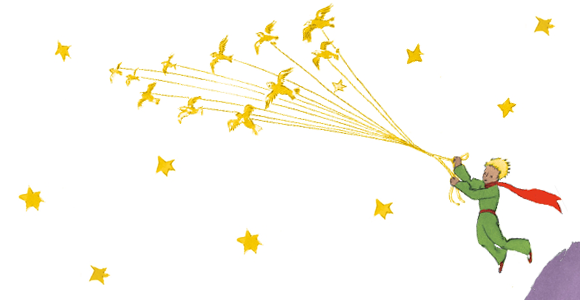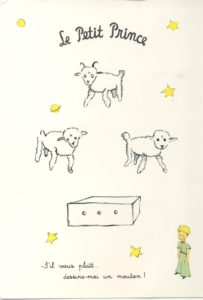November
“Imagination transmission through Exupérism: what’s in the box?” – Max Peters

Nicolas Salazar Sutil’s engaging lecture gave fascinating insights into prehistoric artworks, through an analytical approach reminiscent of an archaeologist or even geologist. Through his discussion of caves, limestones, sedimentary rocks and the impact of darkness on artists, he showed us how the principles of artistic practices can be recognized and interpreted in centuries-old rock paintings. The key idea that underlined all of these observations was made very clear; everything centers around motion. Not just the motion of nomadic artists that kept working and building upon previous work, but even more so the motion of nature; which refers to the constant shifts and changes of rock formations, and the artistic recombination that these natural movements inevitably cause.

Salazar Sutil’s main argument proposed a way of looking at movement that can be considered uncommon, because it is non-Western, non-rational, and does not concern itself too much with language. He stressed the importance of the body and body language, and how we should recognize motion and movement in artworks. This is important because motion is able to transmit life, memory, and imagination. It was especially the transmission of imagination that sparked, well, my own imagination, because he used one of my favorite books as an example; Antoine de Saint-Exupéry’s Le Petit Prince. More specifically, Salazar Sutil referred to the first encounter between the book’s narrator, a survivor of a plane crash, and the titular little prince. The prince has a simple request for the pilot; ‘draw a sheep’, but the boy is not easily satisfied. After a couple of attempts, the pilot finally decides to draw a box with three holes, explaining that the ‘sheep is inside’. Upon seeing this final attempt, the prince is finally happy and satisfied, exclaiming that this was exactly what he wanted. To Salazar Sutil, this scene perfectly shows the possibilities of the imagination, because it is up to the prince, and indirectly the readers of the book, to imagine what the sheep looks like. The only thing the artist has to convey is a space for the sheep to exist in. From there, it is up to us to decide what is actually inside the box.
The Little Prince analogy is important for the understanding of artistic transmission, because it shows how a very basic and simple idea (‘drawing a sheep’) can be transmitted to every reader, because everyone has the capability to imagine things. That is to say, if we make sure that we do not lose a healthy amount of childlike innocence and curiousness. This analogy shows us how imagination transmission is a process not restricted by space nor time, cultural context nor political beliefs, it is an inherently human process that can be triggered in all of us, if we allow the child in all of us to wander around and use its imagination. Or, as Murris & Kell phrase it; “The novella is thus a potent meditation on imagination and the ways in which it is expressed, communicated and evaluated, as well as being a poignant reminder that growing up not only has its gains but also its losses” (Murris and Kell 2016). There is a little prince in all of us, and if we give him enough space, we can actively engage in transmission through imagination.
[1] Murris, Karin S., and Catherine Kell. “Imagination and literacy: Introduction to the special issue.” Reading & Writing – Journal of the Reading Association of South Africa 7.2 (2016), p. 2.
References
- Lecture by Nicolas Salazar Sutil for the Transmission in Motion program on November 1, 2017.
- Murris, Karin S., and Catherine Kell. “Imagination and literacy: Introduction to the special issue.” Reading & Writing – Journal of the Reading Association of South Africa 7.2 (2016): 1-5.
- De Saint-Exupéry, Antoine. The Little Prince. Dramatic Publishing, 1998.
Illustrations

